► Ford’s all-electric Mustang Mach-E driven
► RWD, AWD Extended Range, and GT tested
► Zero local emissions but still fast in a straight line. A Mustang for our times
This is a Ford Mustang, but not as we’ve known it ever before – this one’s also an electric car. Nothing highlights the difference between what we think the word Mustang means (V8 coupe) and what Ford thinks it means (freedom, pioneering spirit, a hint of rebellion) better than pony badges on an electric SUV. How can this be a Mustang, you ask? Because ethos outweighs powertrain, Ford’s marketing team reply. We agree to disagree, but is the car any good? Read our review to find out.
What Mach-Es are available?
There are all-wheel-drive models, but you can still pick one with rear-wheel drive for that authentic tail-out-at-every-junction Mustang experience, and because nobody is expecting Macan-alike handling, it doesn’t need to defy the physics of lugging a great big battery around.
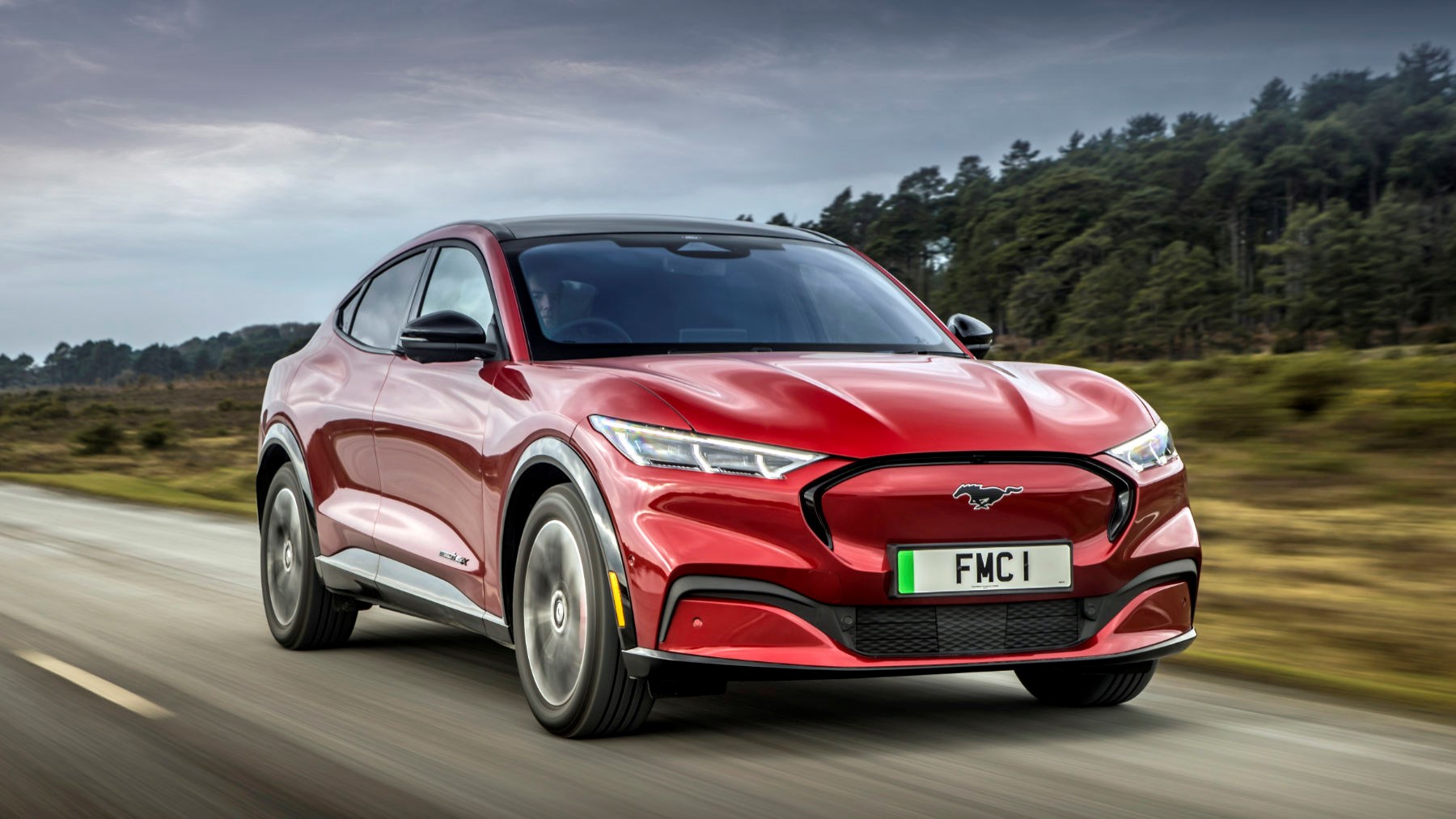
For now the purest model seems to be the one that makes the most sense. Its combination of rear-drive dynamics, a very usable 0-62mph time and Tesla Model Y-beating range makes the Extended Range RWD model the most Mustang-like, and the one to go for.
Does it drive like a Mustang?
The ride is quite firm at low speed. Still, things improve at speed, and as always the trade-off comes in the form of surprisingly good body control. The Mach-E can weigh in at more than two tonnes but a lot of that is positioned low and between the axles so you don’t feel it in a corner anywhere near as much as you’d expect. It turns in neatly, resists understeer well and holds itself upright admirably.
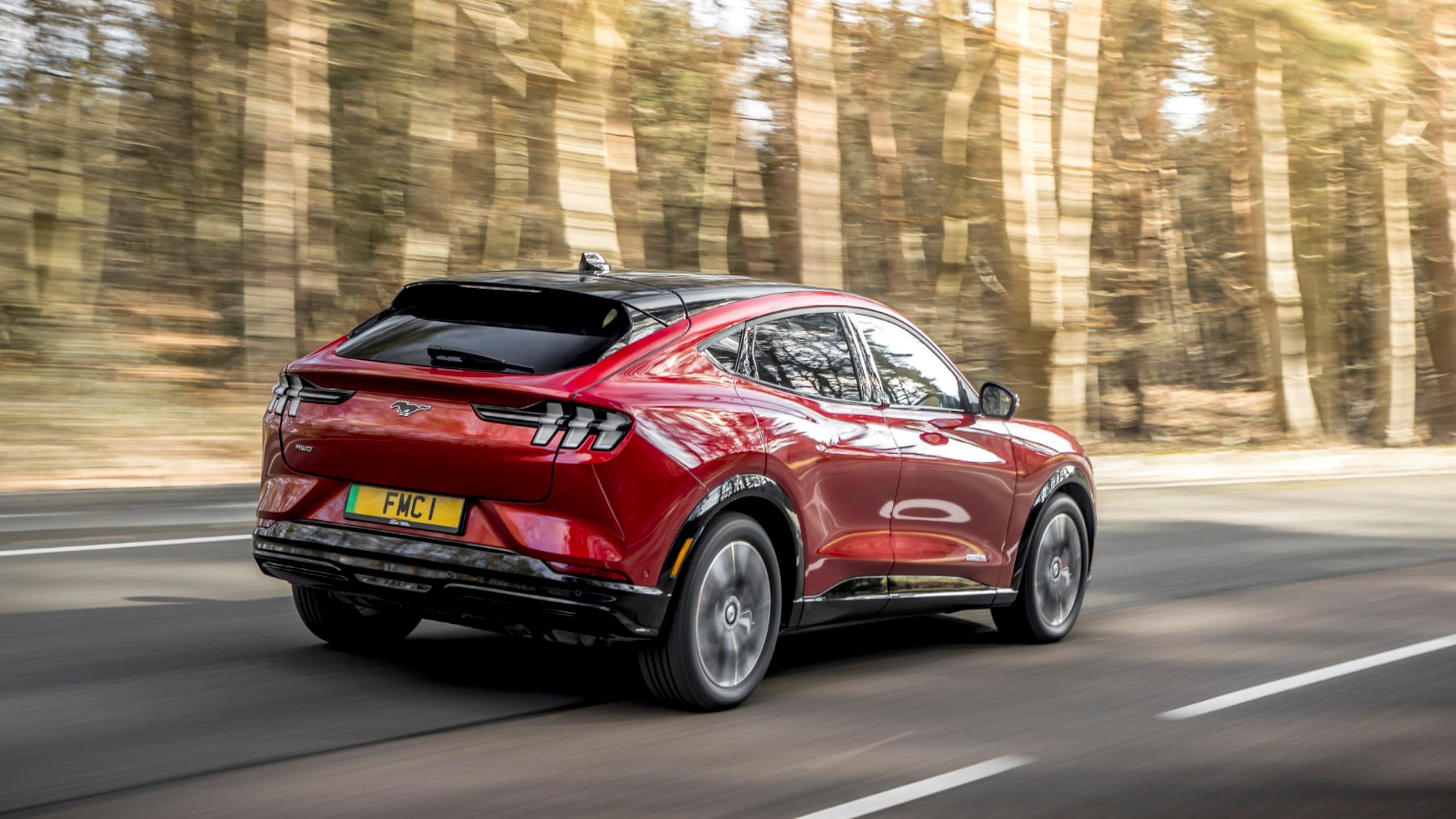
However, it might be the throttle mapping, but there is a sense of bulk when pulling away in the lower powered cars. Almost like the car needs half a second to get into its stride – rather than that pinged-elastic-band sensation we’ve got used to in electric cars.
The same cannot be said for the GT model, with its 634lb ft of torque. This will leave even white van drivers a distant blur in the rear-view mirror.
The steering is not actively bad, but a slightly off-putting combination of light heft and on-centre vagueness that speeds up very quickly when you start to turn the wheel. It takes a bit of getting used to but the accuracy you want is there, and that low roll rate means it doesn’t feel like it’s going to topple over mid-bend in response to a sudden direction change.
There’s plenty of trademark Mustang flamboyance on the corner exit too with RWD models. Bring the power in gradually and the car rotates neatly around the driver. Mash the pedal and the rear steps out on-demand. It doesn’t seem as keen as a petrol Mustang to get really sideways, though, and that’s perhaps a nod to the more daily-drive, family-friendly nature of this model. You can turn the traction control off but it’ll still interfere, and because it’s a button on the touchscreen now, there doesn’t appear to be the option to hold it down for five seconds to turn it off properly.
What difference does all-wheel drive make?
All-wheel drive on the Mach-E (like other EVs) comes from having an electric motor at each end. The rear-drive models have a motor in the back, driving only the rear wheels; the all-wheel-drive versions add a motor up front, driving the front wheels.
Battery packs don’t impact on cabin or boot space, but they do change the weight of the car. The Extended Range rear-wheel-drive car is actually heavier than the Standard Range all-wheel-drive model – the bigger battery pack adds more kilos than the extra motor and drivetrain hardware does.
The combination that gives you the longest range is the Extended Range battery with rear-wheel drive: 379 miles. The combination with the quickest 0-62mph time is GT with all-wheel drive, which can smash the 0-62mph sprint in 3.7sec.
Although Ford insists on calling the Mach-E an SUV – when really it’s a roomy five-door hatchback – that doesn’t mean it has any off-road ability or inclination. The all-wheel drive is not there to help you cope with sand or mud, but to offer extra all-weather reassurance and get more of the considerable output of the motors on to the road.
The biggest difference between the rear- and all-wheel-drive cars can be felt as you exit a bend. The AWD Mach-Es we’ve driven (Extended Range and GT) were happy to accelerate much earlier as you straightened up, and felt more stable and composed doing so. Not that the rear-drive cars are unstable – they have a pleasingly organic, involving feel to them, always letting you know what they’re up to. Think rear-drive BMW versus all-wheel-drive Audi. It’s a tidier experience as well as a more rapid one – and more expensive.
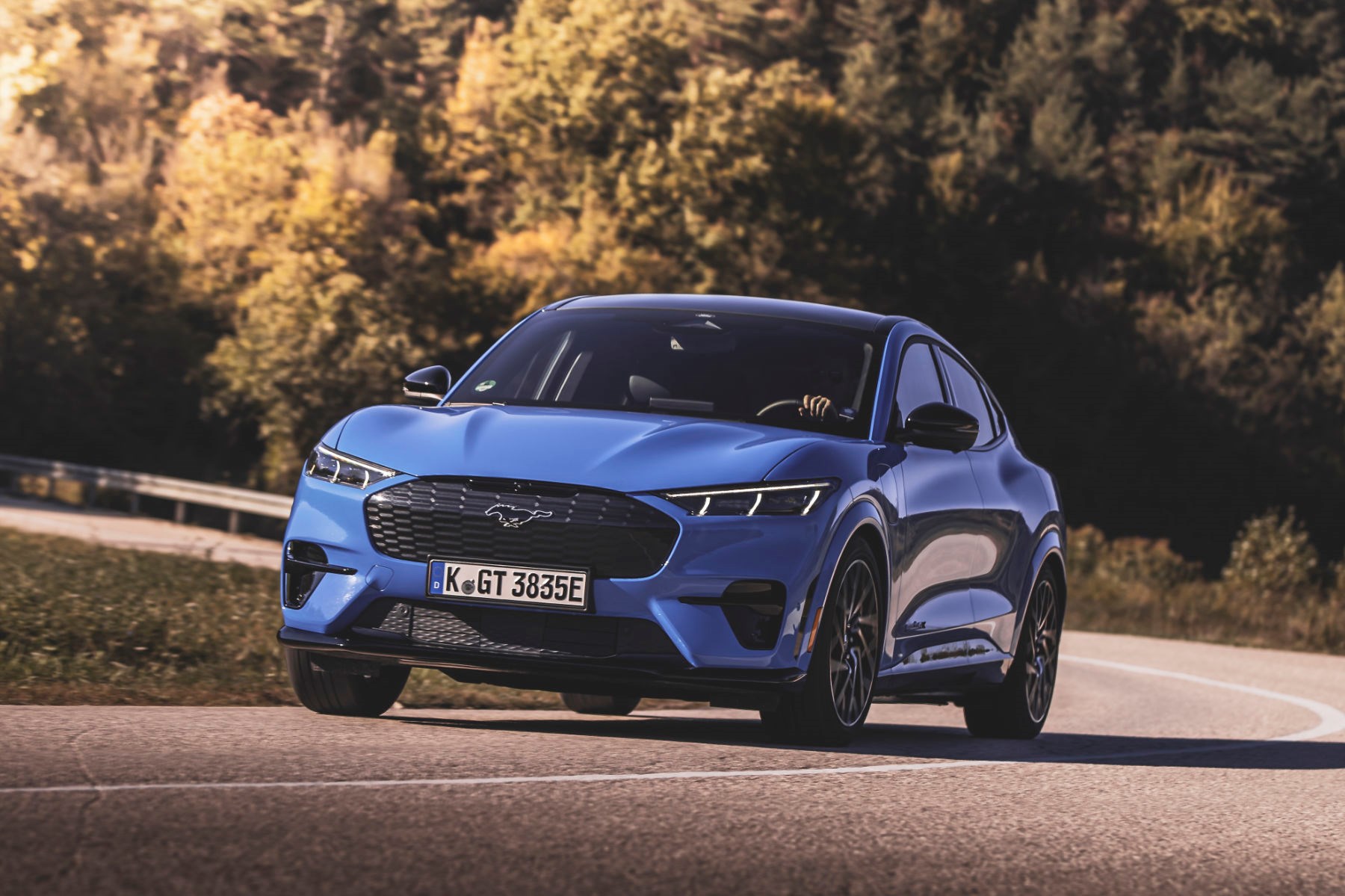
Full-fat GT cars (pictured above, complete with body coloured wheelarches, and a new front bumper design with a different grille) get twin motors pumping out a combined 480bhp and of course AWD. Turn in is fine for such a large car, although the rack is a little slow. Traction from the bespoke 245/45 Pirellis is supreme. Even the biblical torque can’t unstick it properly on a hairpin bend. The only thing getting in the way of the Mustang’s pursuit of corners is a faint chirrup from the tyres.
Ford is so serious about the performance with the GT that it’s created a new driving mode, Untamed Plus. This does the usual stuff (sharpening, stiffening, jiggling) but also turns off the power-boost function, prolonging the battery for track use. Fuel saving like they do in F1, but in an electric SUV. What a world we live in.
That’s a big touchscreen…
Well, it’s certainly very large, and there’s no hiding the fact whoever designed it clearly spent a bit of time in a Tesla. Most if not all of the main car controls now reside within its 15.5 inches – save for the lights, handbrake, hazards and now quite comically outdated drive selector dial.
It’s not completely intuitive in its layout, there are still a few conflicting menus that will leave you hunting around a bit for the setting you want at first, but it’s bright and easy to read with big buttons that are easy to find with your finger even when you’re being bounced around.
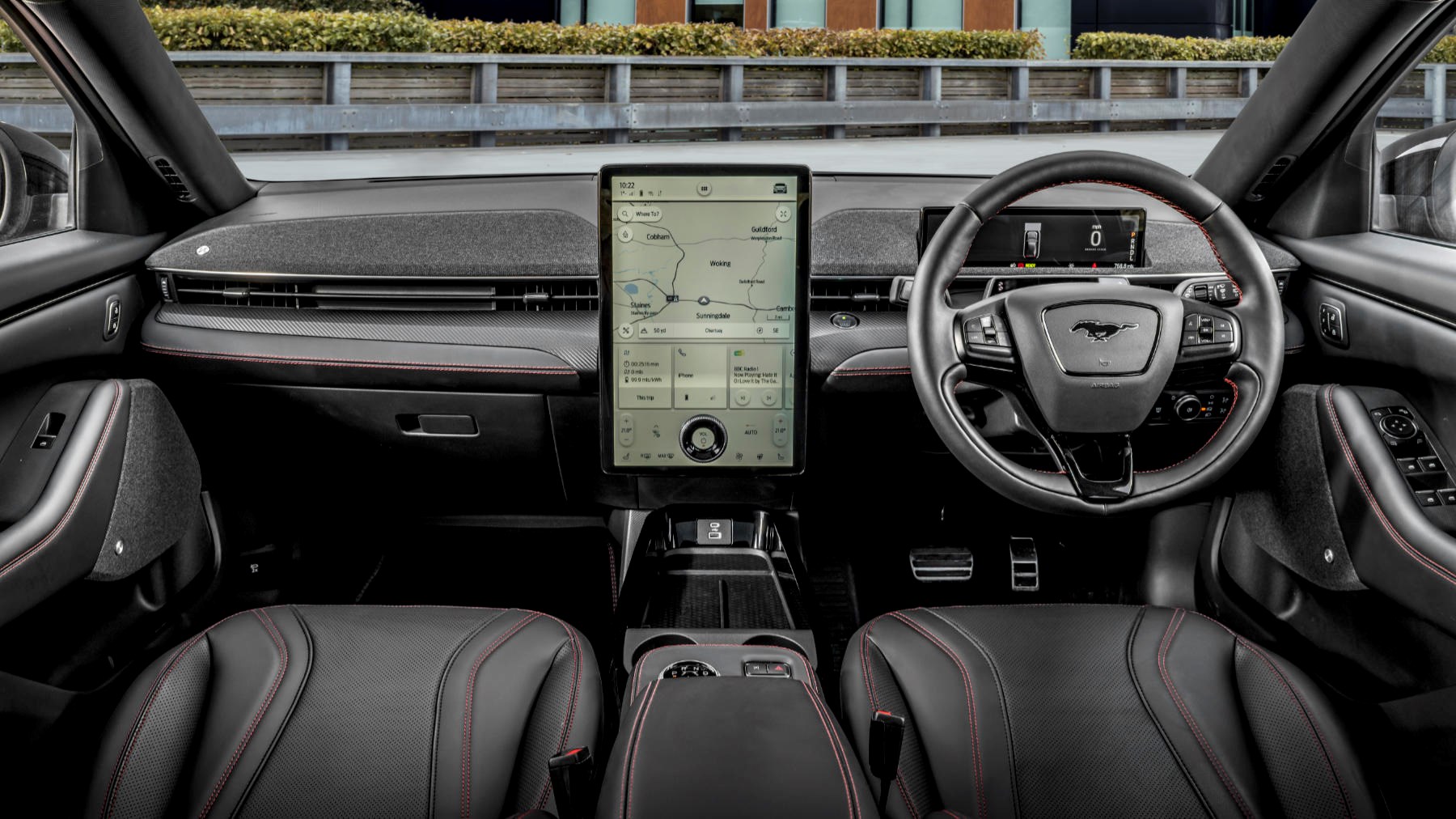
In a welcome juxtaposition the dial screen is letterbox sized and shaped with just the information you need and nothing more. The wheel itself is pleasingly minimalistic by today’s standards, just a cluster of buttons for the cruise control on one side and media toggles on the other, although it does feel quite large in diameter.
Despite a few throwback stalks and switches the cabin feels like one from a more expensive car – the tweed material on the dash and silver trim add up to quite an upmarket feel, and the large panoramic glass roof lights up the whole cabin.
We’re still not sold on the door-popper buttons – they feel a bit 2000s future-gazey at best and at worst feel a bit like poking C-3P0 in the eye. It’s also odd that Ford went to all the hassle of smoothing the door panel off, only to graft on a weird plastic winglet for you to swing off instead. They do look a bit like the aero door handles on a Ferrari 458, though, so that’s something to tell your mates.
How practical is it?
Well the boot is a few litres smaller than the petrol Mustang, but then again you do get usable back seats as a trade-off, and because it’s a hatchback the Mach-E’s luggage capacity is a bit more accessible. There’s also a front boot with a handy 81 litres of space, plus a cable storage system to keep things neat and tidy. It also has a drain plug, like the Ford Puma’s Megabox, so you could use it for wet or muddy sports equipment.
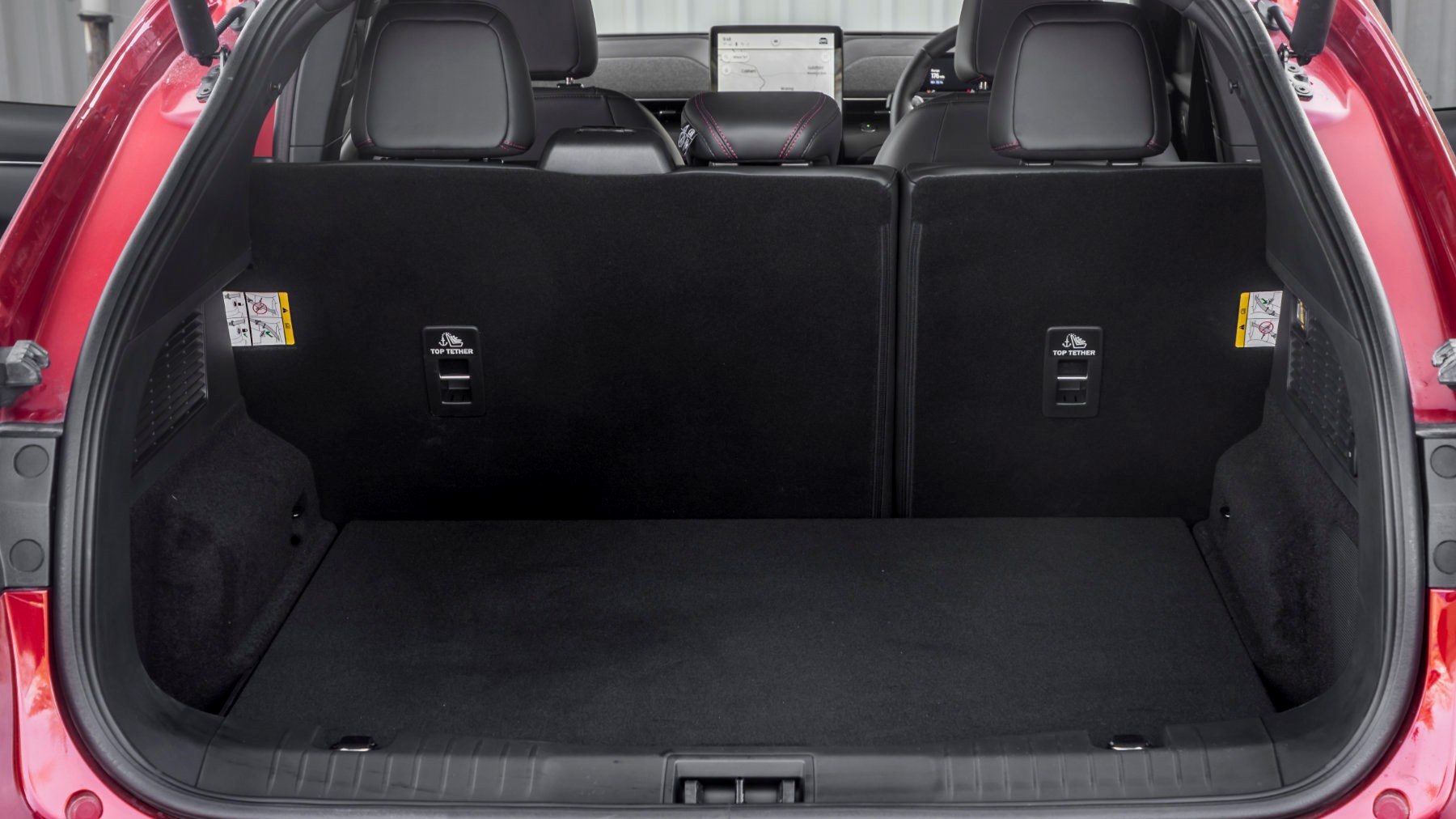
Inside there’s a big open space under the screen with large wireless charger and separate storage underneath, plus slim and shallow door pockets and a bigger cubby under the armrest.
Charging the car on test takes about 10 hours from a home wallbox, while a 150kW Ionity pump promises 73 miles in 10 minutes, or a 10-80% charge should take 45 minutes. There’s also a ring of five lights on the charger release button to give you a view of how full the battery is from a glance, which is a cool feature.
Verdict: Mustang Mach-E
The Mach-E is plainly not an electric replacement for the petrol car. That said, importing however small an amount of Mustangness to the driving experience does make it feel significantly more special than an all-electric Kuga, which is the other direction Ford could have taken.
Like it or not, Ford’s naming strategy and badge-worthiness will be pretty inconsequential to the majority of UK buyers. We’ve only been treated to a RHD pony car in the most recent generation, don’t forget, so the Mustang remains for most a film screen icon rather than a genuine ownership aspiration.
Buyers of this car are more likely to be drawn in by the driving range and tech on offer. The fact it’s great fun to drive and has a horsey badge are just attractive extras.
Read more Ford reviews here